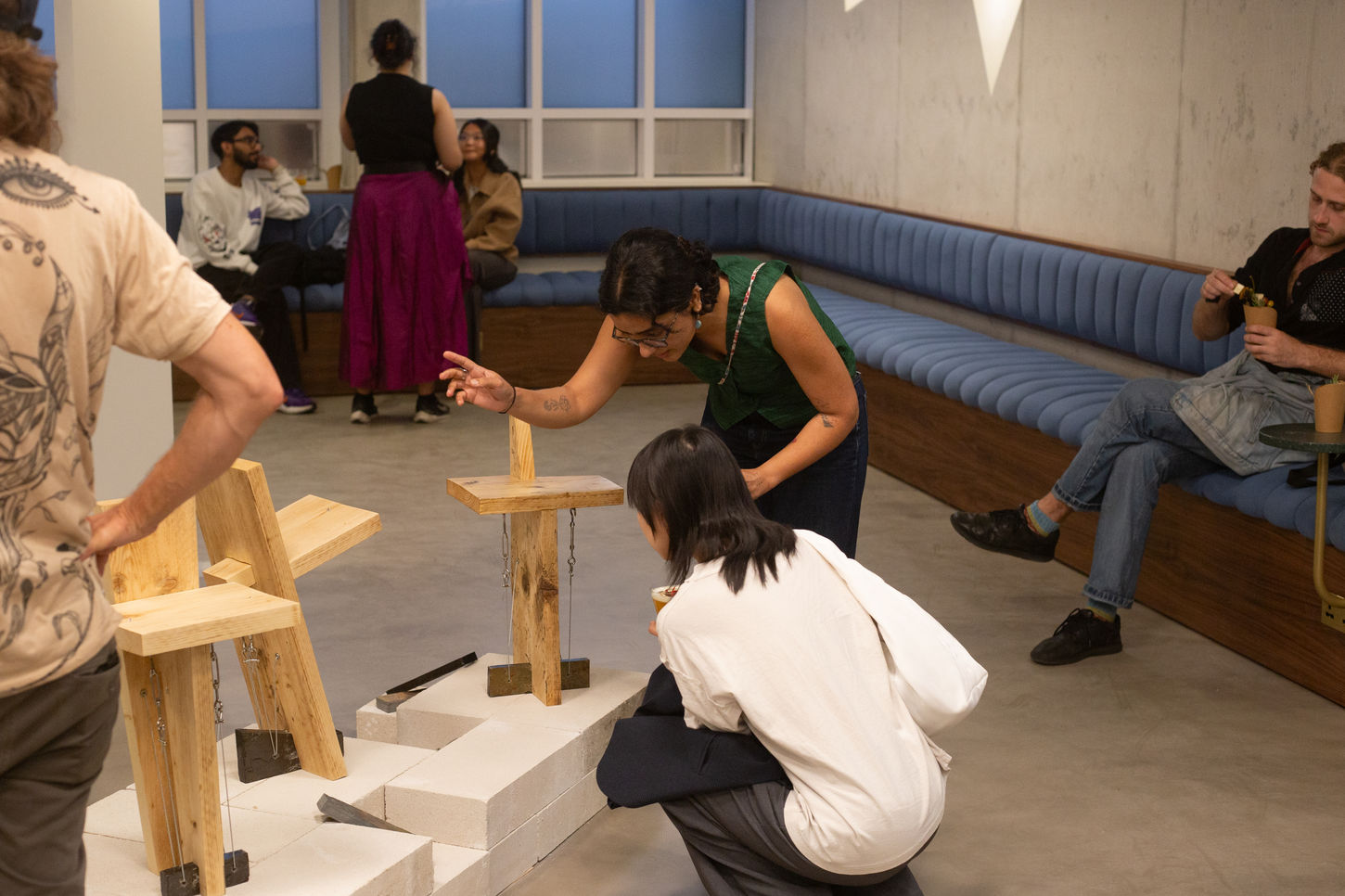
Tula
Location: London and New Delhi
Furniture Design
Tula, meaning ‘balance’ or ‘equilibrium’ in Sanskrit, is a furniture line that embodies the principles of ethical sourcing and circular economies while pushing the materials to their limit, and restoring them with minimum intervention.
Launched at the 2024 London Design Festival










A project that questions the process of building as the source and place of materials vary. Reclaimed scaffolding planks from London, and locally salvaged stone in Delhi come together to create a flat-pack solution.
Stone: the foundational unit
Kund slate, from Rajasthan and Haryana, India, is a fine-grained metamorphic rock most readily used for flooring and roofing. Through sedimentation of dirt from a watercourse deposition, the stone develops a tonal variation of black, burgundy, violet, and grey.
Using stone as a wedge; one of the six classical simple machines, creates friction when inserted between two materials. Leveraging the slate's high slip resistance, we’ve created a locking mechanism for the scaffolding boards to build a foundation for the assembly of the furniture line.
Timber: the structural unit
Originating from European whitewood, given their high fibre strength, they are cut to standard sizes, 3.6cm thick and 22cm wide, with a variation in lengths dependent on the site of use. While cut to size, the boards are often unseasoned, seasoning naturally over use, their surface turns quite brittle while still holding some moisture within, often leading them to warp and form cracks at the centre of the plank over time.
The boards are designed so that all pieces are cut from a running length of 120cm, one of the shortest standard lengths available. These profiles are further cut carefully, keeping the mentioned properties in mind, in an attempt to ensure they don’t split while using the entire length.
Inspired by the vernacular way of working with stone and wood known as kath-kuni construction, the two materials come in equilibrium with the help of tension cables in an attempt to stitch the two together. Within this act of counterbalancing the pieces create a playful assembly and question the cycle of material imbalance.
Designed in collaboration with Dasein Lab


















